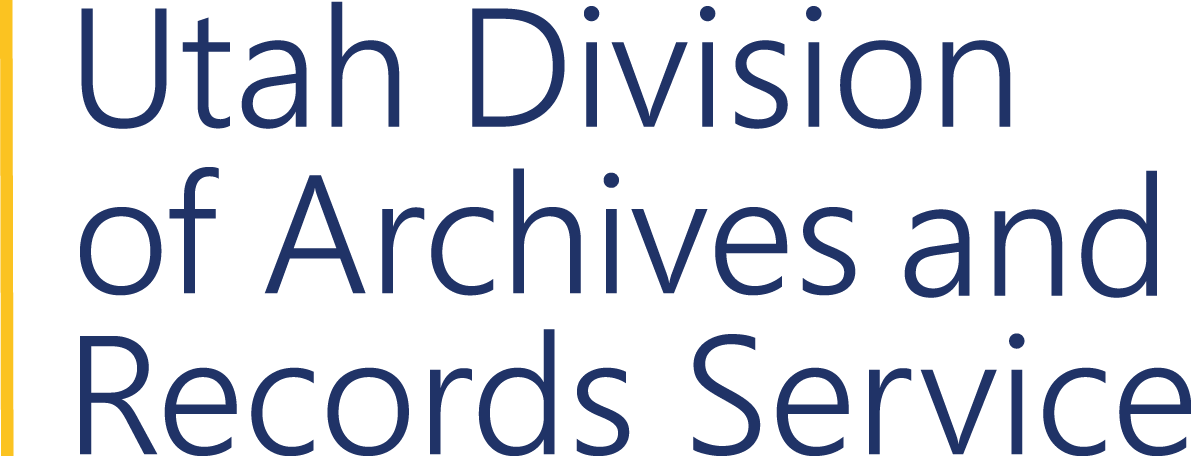CAMP FLOYD MINING DISTRICT (UTAH)
Agency History #2426
CREATION
The federal government stationed 2,500 troops at Camp Floyd, south of Salt Lake City in 1859 under the command of Albert Sydney Johnston. When the military abandoned Camp Floyd in 1862, some of the soldiers stayed in the area to prospect. Camp Floyd prospectors organized the Camp Floyd Mining District in April 1870, two years before Congress passed a federal mining law legitimizing already established practices of exploring for and claiming mineral wealth in the public domain (Statutes at Large, Treaties, and Proclamations, of the United States of America, vol. 14, 1872, chap. 152). As originally established the boundaries of the Camp Floyd District took in the range of mountains between Rush and Cedar Valleys. During the decade of the 1870s, $56,000 worth of silver was taken out the Carrie Steele, Sparrow Hawk, Marion, Last Chance, Mormon Chief, and other Camp Floyd mines. Silver mining supported a mining camp called Lewiston which grew to a population of 1500. By 1880 the silver was exhausted and Lewiston was essentially abandoned.
In 1879 a German prospector staked a claim which he called Mercur for the German word mercury. Though his claim did not pay off, he left a name for the boom town which would be established later. Gold was discovered in the Camp Floyd Mining District in 1883, leading to the founding of the Mercur Gold Mining and Milling Company. The profitability of gold mining was greatly enhanced in the early 1890s by the development of the cyanide process. A commercial cyanide mill built at Mercur, provided a significant stimulus to mining activity throughout the area. Late 19th century Mercur was a thriving town with a substantial business district.
In 1897 the Utah Legislature enacted a mining law, which transferred all responsibility for keeping mining records to county recorders (Laws of Utah, 1897, chapter 36). After that date records for the Camp Floyd District were kept by the Tooele County recorder. A 1902 fire destroyed Mercur. In only a few hours, the thriving city was "swept from the face of the earth." Most of it was never rebuilt. By 1913 the ores were exhausted, the mines and mills closed, and the town abandoned.
FUNCTIONS
Original Camp Floyd by-laws allowed anyone to make any claim as long as he complied with district laws. The district recorder recorded all proper mining notices and locations, and for doing so collected a fee. He kept his office open during regular business hours and allowed inspection of the books in his or his deputy's presence. Originally, the district required prospectors to have claims recorded and do "one faithful days work" within 15 days of location. Within 60 days prospectors were required to dig or blast a hole at least four feet deep. This would hold a claim for one year only.
After federal mining law was enacted in 1872, miners in the Camp Floyd District revised by-laws to conform to differences between district practices and federal standards. Claims could be up to 1500 feet and were not limited as previously to 200 feet. Also, $100 worth of annual assessment labor was required to maintain a claim. The district revised by-laws again in June 1894. In order to make a location good, prospectors were required to move 100 cubic feet of hard rock or 200 cubic feet of soft earth within thirty days. This was in addition to federal work assessments. By-laws required that every claim be plainly marked at discovery with a substantial monument or post.
ADMINISTRATION
District recorders were elected for one year terms at miners meetings held each year in June.
Camp Floyd Mining District recorders appointed deputies to assist them in carrying out their responsibilities. In 1897 the Utah Legislature enacted a mining law which transferred responsibility for keeping mining records to county recorders. (Laws of Utah, 1897, chapter 36). The mining records of the Camp Floyd District were transferred to the office of the Tooele County recorder.
| MINING DISTRICT RECORDERS | |
| Lewis Greely | 1870, Apr-1873, Jun |
| John McPherson | 1873, Jun-1874, Jun |
| B.F. Shaw | 1874, Jun-1877, Jun |
| Charles H. Higginson | 1877, Jun-1879, Jun |
| H. E. Miller | 1879, Jun-1889, Jun |
| L.S. Manning | 1889, Jun-1892, Feb |
| John McFarland | 1892, Feb-1894, Jun |
| C.C. Higgins | 1894, Jun-1897, Jun |
| M. Howe | 1897 (West Camp Floyd District) |
COMPILED BY: Rosemary Cundiff , August 2002
SOURCES
Blanthorn, Ouida. A History of Tooele County. Utah Historical Society, 1998.
Camp Floyd Mining District (Utah). Recorder. Mining records. Utah State Archives (Series 10334).
Laws of Utah, 1897, Chapter 36. Utah State Archives (series 83155).
Statutes at Large, Treaties, and Proclamations, of the United States of America, vol. 17, chap. 152. Published by authority of Congress, Boston: Brown, Little and Company.
United States. General Land Office. Mining District By-laws. Utah State Archives (series 3651).
Young, Earl B. "The Mercur Mining District," News Bulletin of the Mineralogical Society of Utah. (December 1943) Vol. 4, no. 2, p. 13.
Page Last Updated July 2, 2003.
